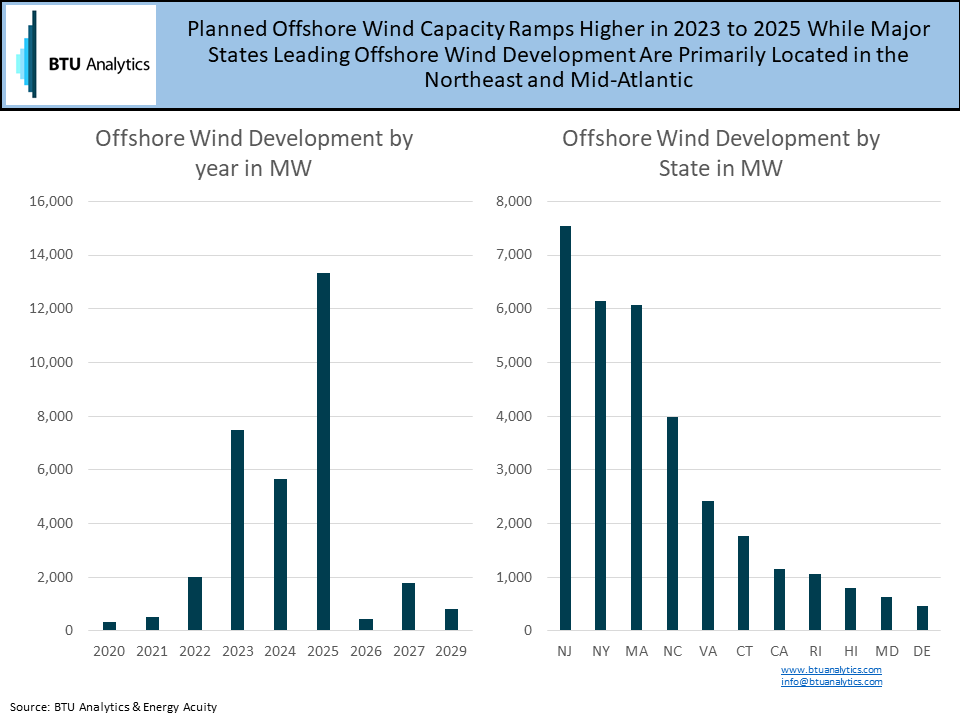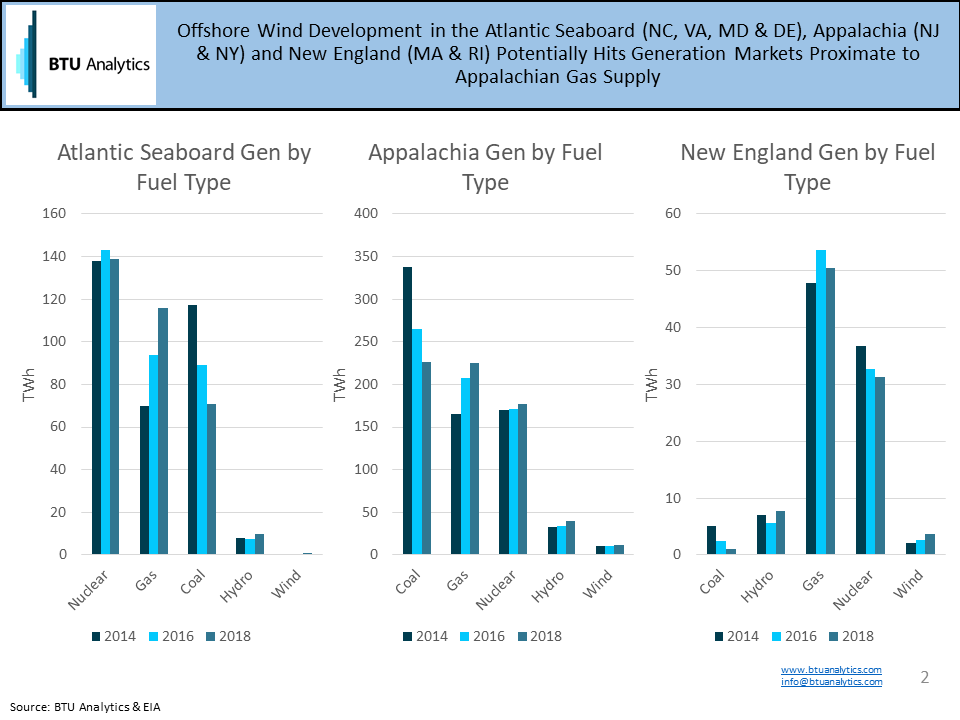Offshore wind development continues to gain traction in the US. Currently, 51 projects are in various stages of development. The projects combine for 33,000 MW of capacity spread out across 13 states. Offshore wind’s attractiveness is driven by increased scale from technology improvements which have pushed turbine capacity factors higher. Additionally, the prospect of siting wind farms offshore over the horizon line solves the potential for NIMBY opposition to projects. Offshore wind sets up a shift in US wind development. Historically, wind development focused on onshore projects in Texas, the Midwest, and Western states. Today’s Energy Market Commentary will review planned offshore wind development and potential impacts to existing power generation markets.

As shown above, US offshore wind development ramps from 2023 to 2025. The current leaders of planned offshore wind capacity are New Jersey, New York, and Massachusetts representing over 19,000 MW of capacity. The other states with significant planned development are almost all located in the Northeast and Mid-Atlantic states which represents a major shift for wind development in the US. However, offshore wind is still an emerging technology in the US, and with projects dated that far into the future, the risk of delay or even cancellation remains a concern.
As shown below, onshore wind capacity is highly concentrated in the Great Plains states of the US lead by Texas. Texas is also the largest state for gas generation capacity.

The shift of proposed offshore wind development to East Coast states will put wind in competition with existing generation sources. As shown below, the Atlantic Seaboard and Appalachia currently have minimal wind generation but any increases from offshore wind generation would likely displace coal and gas generation. In New England, where coal generation is heading to zero, gas would likely be the most impacted by ramping offshore wind generation.

While the US is still years away from a serious ramp up in offshore wind generation, the majority of states with proposed offshore wind generation are adjacent to the Appalachian supply area and have benefited from recent increases in pipeline capacity. Offshore wind may be a nuisance to Appalachian gas producers looking for growing gas demand, but only time will tell. To follow BTU Analytics’ coverage of wind and gas generation, request more information on the Henry Hub Outlook.








